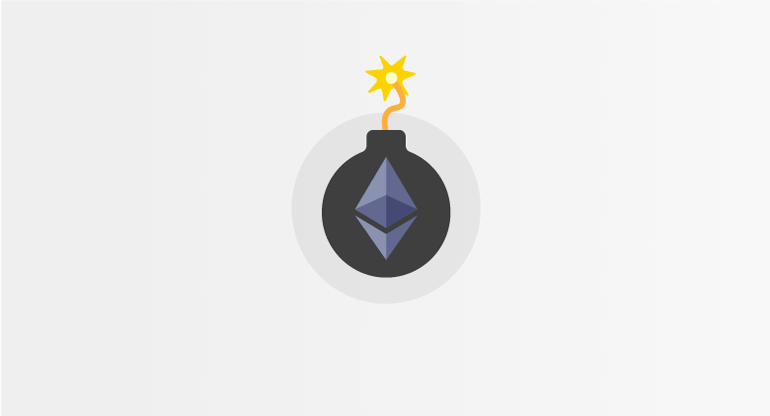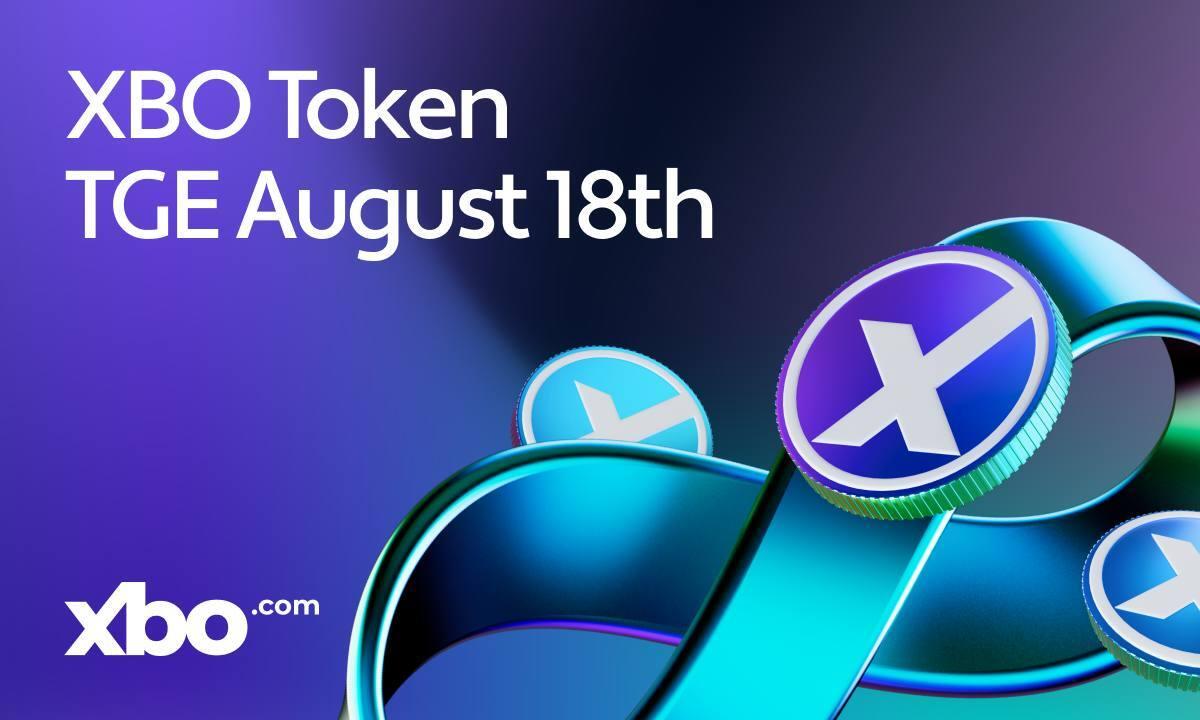Vitalik Buterin, a Russian-Canadian programmer, is best known for being the founder of the Ethereum difficulty bomb blockchain. Buterin created Ethereum as a decentralized global computer that could be used for everyday transactions using blockchain technology. He was inspired by the Bitcoin network, but he saw its limitations, which led him to create Ethereum. Buterin built the Ethereum blockchain with a ticking time explosive called the Ethereum Difficulty Bomb, which was designed to incentivize Ethereum core developers to push through to the Merge, a significant milestone in Ethereum’s development.

The Ethereum Difficulty Bomb was an internal mechanism that aimed to encourage ETH core developers to develop new technology from scratch to advance to the next stage in the roadmap to building a supercomputer. The Merge is where Ethereum finally progressed from a proof of work (POW) consensus mechanism to proof of stake (POS), which was a significant step forward for the platform. The Ethereum Difficulty Bomb played a crucial role in this development, as it helped to incentivize developers to work hard and push through to the Merge.
While the Ethereum Difficulty Bomb was an essential mechanism for Ethereum’s development, it was not without its challenges. For example, it made the Ethereum blockchain more difficult to mine, which led to slower block times and increased transaction fees. However, these challenges were ultimately overcome, and the Ethereum blockchain emerged stronger and more resilient as a result.
Looking to the future, there are many exciting developments in store for Ethereum, including the implementation of Ethereum 2.0, which will bring significant improvements to the platform’s scalability, security, and usability. With its innovative technology and dedicated community of developers, it’s clear that Ethereum is here to stay and will continue to play a crucial role in shaping the future of blockchain technology.
Origins of the Ethereum blockchain

In 2013, Vitalik Buterin launched the Ethereum whitepaper, marking the start of Ethereum’s journey towards becoming a decentralized world computer. In his proposal, Buterin envisioned a blockchain that could do more than just handle transactions, but also execute smart contracts and decentralized applications.
After two years of intense development, Ethereum finally launched in July 2015, marking a new era in the blockchain industry. Ethereum’s launch was a significant milestone in the history of blockchain technology, as it introduced a new way of thinking about decentralized applications and smart contracts.
During the development of Ethereum, the project attracted some of the most prominent figures in the cryptocurrency industry to its founding team. One of these figures was Charles Hoskinskins, who served as the Chief Executive Officer before leaving in 2014 to start Cardano (ADA). Another was Gavin Wood, who served as the Chief Technology Officer for the Ethereum network but left in 2016 to start Polkadot (DOT).
While the above may describe some interpersonal issues between the founding forefathers of Ethereum, the network’s blockchain also faced significant technical challenges. These challenges were met with a community-driven effort to improve the network’s scalability, security, and overall functionality, resulting in the development of various scaling solutions like sharding, state channels, and layer-2 protocols.
Problems with Ethereum 1.0 network
The first iteration of the Ethereum design was quite similar to that of Bitcoin. However, it stood out from its predecessor in one crucial aspect; it could execute smart contracts. The network relied on the Proof of Work (PoW) consensus mechanism to validate transactions. This type of mechanism is incredibly energy-intensive and requires a massive amount of hash rate to process transactions. As the Ethereum network gained popularity, it soon became clear that it was not immune to scaling issues.
At the beginning of its creation, the Ethereum mainnet was relatively simple in design. However, this simplicity was short-lived as enthusiastic users piled on smart contract activities such as initial coin offerings (ICOs), decentralized finance (DeFi) platforms, and NFTs. These activities led to significant network congestion, causing the network to nearly buckle under the pressure.
Fast forward two years later, by the end of 2017, the Ethereum network faced a multitude of challenges. High gas fees, low transactions per second (TPS), and high energy consumption were just a few of the issues plaguing the network (see the chart below). These challenges in scaling the Ethereum blockchain bring us to the discussion of our main topic, which is the various solutions proposed to combat these issues and ensure the longevity of the network.
The Ethereum difficulty bomb

The Ethereum difficulty bomb, also known as the “ice age,” is a mechanism implemented in the Ethereum blockchain to gradually increase the difficulty level of mining. It was introduced as part of Ethereum’s roadmap to encourage the transition from the Proof of Work (PoW) consensus algorithm to the Proof of Stake (PoS) algorithm.
The purpose of the difficulty bomb is to make mining increasingly difficult over time, ultimately discouraging miners from continuing to mine on the PoW chain and encouraging the community to migrate to the PoS chain. The rationale behind this is to incentivize the Ethereum network’s transition to a more energy-efficient and scalable consensus mechanism.
The difficulty bomb works by adjusting the difficulty of solving mathematical puzzles that miners must complete to validate transactions and add new blocks to the blockchain. As time progresses, the difficulty bomb increases exponentially, making it significantly more challenging for miners to find valid solutions within a reasonable timeframe.
The intention of implementing the difficulty bomb is to act as a “ticking clock” and put pressure on the Ethereum community to expedite the transition to PoS. Once the difficulty bomb reaches a critical point, it becomes practically impossible to mine new blocks on the PoW chain due to the extremely high difficulty level. This encourages miners and validators to shift their focus to the PoS chain, which is expected to provide a more efficient and environmentally friendly consensus mechanism.
The Ethereum developers have periodically delayed the full activation of the difficulty bomb to allow for more time to finalize and implement the PoS upgrade known as Ethereum 2.0. These delays have been intended to give the community enough time to prepare and transition smoothly from PoW to PoS without disruption.
The Merge: transitioning from PoW to PoS

In September 2022, a highly anticipated event finally occurred: the Ethereum network transitioned from proof of work to proof of stake. This transition was brought about by the successful development of Ethereum 2.0 by ETH developers. Ethereum 2.0 utilizes proof of stake consensus mechanisms to validate transactions, which is different from the previous proof of work method.
To participate in the network’s consensus and validation measures, users must undergo the staking process by locking up 32 Ethereum tokens. Validators, or users who stake their tokens, are rewarded with fees paid in ETH.
This transition to Ethereum 2.0 could not have happened at a better time, as the world is currently experiencing a heightened focus on global climate change. By doing away with the proof of work consensus mechanism, Ethereum 2.0 will result in a 99.95% reduction in Ethereum’s energy consumption. Additionally, the transition to proof of stake has eliminated the need for the Ethereum difficulty bomb, as computational power is no longer needed to process transactions.
The Ethereum Merge was a significant milestone for the Ethereum blockchain, as it allowed the network to move closer towards the vision of becoming a supercomputer as envisioned by its founder, Vitalik Buterin. While the transition to Ethereum 2.0 resulted in many successes, it is only the beginning of the blockchain’s roadmap. There are still many exciting developments to come that will further enhance the Ethereum network’s capabilities and potential applications.
Future of Ethereum upgrades
The future of Ethereum upgrades is centered around the transition to Ethereum 2.0, also known as ETH2 or Serenity. Ethereum 2.0 is a major upgrade that aims to address scalability, security, and sustainability challenges faced by the current Ethereum network.
The key components of Ethereum 2.0 include the shift from the Proof of Work (PoW) consensus algorithm to the Proof of Stake (PoS) algorithm, the introduction of shard chains to improve scalability, and the implementation of various technical improvements. Here are some important aspects of Ethereum’s future upgrades:
- Proof of Stake (PoS): Ethereum 2.0 will introduce PoS as the new consensus mechanism, where validators are chosen to create new blocks based on the amount of ether they hold and are willing to “stake” as collateral. PoS is expected to reduce energy consumption and increase the network’s security by aligning the interests of validators with the health and security of the network.
- Shard Chains: Ethereum 2.0 will introduce shard chains, which are additional chains that run in parallel to the main Ethereum chain. Shard chains enable greater scalability by allowing multiple transactions to be processed simultaneously. Each shard chain will have its own set of validators and will operate independently, enhancing the network’s capacity to handle more transactions.
- Beacon Chain and Phase Transitions: The Beacon Chain is the first phase of Ethereum 2.0 and serves as the backbone of the new network. It was launched in December 2020 and acts as a PoS consensus and coordination layer. Subsequent phases will gradually introduce shard chains, enabling the Ethereum network to transition from PoW to PoS while maintaining compatibility with existing applications and contracts.
- EIPs and Improvements: Ethereum Improvement Proposals (EIPs) are community-driven proposals for making technical upgrades to the Ethereum network. These proposals cover a wide range of improvements, including optimizations, new features, and changes to the Ethereum Virtual Machine (EVM). EIPs play a vital role in shaping the future of Ethereum by enhancing functionality, security, and developer experience.
- Optimizations and Layer 2 Solutions: Alongside the core Ethereum 2.0 upgrades, various optimizations and layer 2 scaling solutions are being developed to improve the network’s efficiency and scalability. Layer 2 solutions, such as rollups, aim to handle a significant portion of transaction processing off-chain while relying on the Ethereum mainnet for security and settlement.
The future of Ethereum upgrades is focused on the successful rollout of Ethereum 2.0 and its subsequent phases. These upgrades are aimed at addressing the limitations of the current Ethereum network and unlocking its full potential as a scalable, secure, and sustainable blockchain platform. The transition to Ethereum 2.0 is expected to bring significant improvements to the Ethereum ecosystem, opening up new possibilities for decentralized applications, decentralized finance (DeFi), and other innovative use cases.
Conclusion
The successful implementation of Ethereum 2.0 and the ongoing improvements and optimizations will unlock the full potential of the Ethereum ecosystem. This will create new opportunities for decentralized applications, decentralized finance, and other innovative use cases, driving the continued growth and adoption of Ethereum as a leading blockchain platform.
DISCLAIMER: The Information on this website is provided as general market commentary and does not constitute investment advice. We encourage you to do your own research before investing.
Join us to keep track of news: https://linktr.ee/coincu
Annie
Coincu News























